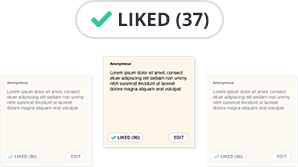
What does Candor mean?
Candor Definition:
Open and honest; sincerity of expression; open (openness); frank (frankness)
Candor, noun (US English) | Candour (British English)
How do you say Candor?
Pronunciation:
ˈkandə
Candor Synonyms:
frankness, openness, honesty, candidness, truthfulness, sincerity, forthrightness, directness, lack of restraint, straightforwardness, plain-spokenness, plain dealing, plainness, calling a spade a spade, unreservedly, bluffness, bluntness, outspokenness;
Informal:
telling it like it is
Usage/Examples:
“She’s a lady of refreshing candour.”
“He spoke with a degree of candour unusual in political life.”
“Minister Adel al-Jubeir, Johnson offered assurances of Britain’s friendship and stressed the importance of candor in their relationship.”
“She spoke with candor about the challenges she faced.”
“His candor was appreciated during the feedback session.”
Produce More Ideas
Candor generates more diverse or creative ideas because people don’t get fixated on the first idea that’s put on the table, avoiding the problems of idea anchoring and clustering.
In traditional brainstorming, the first idea put on the table often becomes a point of fixation.
Avoid Bias
People’s candid, unbiased views come to light because they generate ideas free of social pressure. Reviewing all the ideas at the beginning of the meeting gives everyone a voice, maximizing the creative potential in the room.
In traditional brainstorming, when a majority of the room supports an idea, people with different points-of-view rarely speak up.
Save Time
Candor is extremely efficient. Spend less time in meetings and more time getting things done. This is a far more efficient process to put a lot more ideas on the table. In traditional brainstorming, ideas are generated sequentially — a team might spend 10 minutes discussing the first idea before turning to the second.
HOW TO USE CANDOR
Candor works by decoupling the generation of ideas from the evaluation of ideas.
First, people generate ideas privately at the beginning of the meeting, before they learn the opinions of the other people in the room. Then the team reviews all the ideas generated before evaluating them.

Before the Meeting
- 1. Invite Your Team.
Send your question or problem to the members of your brainstorming team. - 2. Generate Ideas Privately.
Ask people to generate ideas before the meeting begins or devote the first 5 minutes of the meeting to generating ideas privately. - 3. Collect Submissions.
Have each individual submit his or her ideas to the session organizer through Candor.

During the Meeting
- 4. Put all the Ideas on the Table.
Use the Candor web app to project all the cards.Have each person briefly describe all the ideas they generated. It’s critical that at this stage people aren’t evaluating ideas, they are simply hearing all the ideas. - 5. Discuss all the ideas.
Now open up the discussion — eliminate ideas that don’t stand up to scrutiny, modify existing ideas to make them better, cluster ideas into different categorizes, and add new ideas that emerge during the discussion. - 6. Vote on the ideas.
Use Candor to vote on the ideas. If a clear winner emerges, you can stop there. If a few ideas have strong support, you can now focus your discussion on the most popular ideas before voting again.

